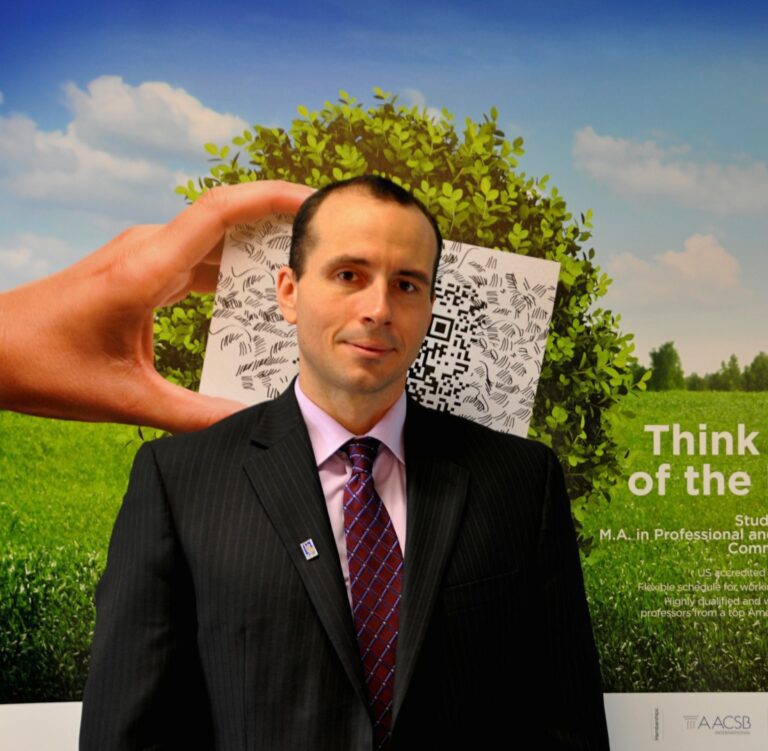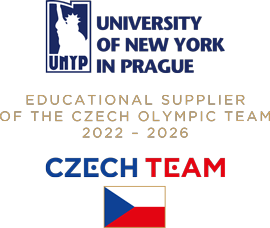Case Study Modeling

Author: Aaron Johnson, Ph.D., CFA
Position: Graduate Business Programs Manager
As I write this, I am miles above the earth, being hurled swiftly through the air in a relatively small metal tube, making my way from Oslo to Vienna. I have been the beneficiary of one of the professional development opportunities offered to UNYP faculty. The event was a case study teaching seminar provided by representatives of Harvard Business Publishing.
The two days went by very quickly. We explored the potential merits and drawbacks of case study use in the classroom, and one of the presenters was even bold enough to suggest that case studies should be 100% of classroom instruction. To be sure, we were able to work on a number of scenarios in which case studies could enhance education, and for many, the sale was made.
But there was an economist in the room.
In fact, there were a few, but I didn’t have a chance to discuss many of my concerns with the others, and I’m unaware as to whether others in the field had the same questions that I did. Most issues involved the most practical pieces of the puzzle in case study teaching. Or to look at it from a modeling perspective, there was a model being implicitly used; in fact, relied upon, with seemingly little attention paid to the underlying assumptions.
I’m sure this is a little humorous at this point. An economist questioning assumptions? Our dismal science is indeed home to some of the greatest violators. Two economists stranded on a desert island can easily model their way to safety, when one turns to the other and says “Let’s assume a boat.” Joking aside, we have the lingering Allais paradox in behavioral economics literature simply because economists in that field choose to maintain an iron grip on something called the “independence axiom,” even though it simply doesn’t hold. There’s no real paradoxical behavior, just a bad assumption. In financial literature, I very simply explained the Equity Premium Puzzle in recent years by pointing to the assumption of an equity proxy that doesn’t (at least didn’t) exist for the investors being studied. Paradox solved. Peers refused to publish it, and I don’t blame them; I would ruin their fun of continuing to bang their heads against walls. Continue on, brethren.
So back to Olso. There I sat, as very accomplished and experienced professors of varied disciplines discussed the process of case study teaching from the selection to preparation to the opening question strategy to the modular discussions and to grading. The process was elegant, and the arguments were compelling. It resembled loosely the “flipped classroom” structure which is gaining traction and popularity. And while I am excited about some of the new ideas, and while I am typically one of the most optimistic people in any discussion, I have worked with (or around) too many groups of students to know that the pre-reading is likely the biggest challenge in this idea. As in everything, incentives are key. I silently evaluated the incentive structure in each panel, and not so silently questioned the incentive structure when appropriate. I was consistently scheming… thinking of the best game plan for the unmotivated student wanting to just get by. How easy within the structure presented to slip in and gain the visage of preparedness by using thoughtful looks and polite pauses as classmates summarized the story for me.
Now, that sounds unfair. Why assume that most students would just do what they needed to in order to get by? Two good reasons. First, I was that type of student during high school and my first run at college, and I got pretty good at it. I still am. Second, getting by with what’s good enough is what we all do all pf the time. It’s a simple matter of maximizing utility in a number of dimensions, including the conservation of time and effort. Students are just as rational as anyone else. It’s not bad, it’s efficient. But in the classroom, what is efficient for the class is often inefficient for education. If our goal is to educate, then a lesson plan must be designed to incentivize what we want to achieve. If not, then all of the work we put in to a new, dynamic, and enlightening case study discussion will be cut off at the knees.
A second point about the model of case study education worth mentioning, although still in development in my mind, is the assumption of the “student.” We like to build microeconomic models by using the representative agent, and this was sometimes employed in the seminars. Students were “allowed” in our model to be of different ages, nationalities, and work experience levels, but none were allowed to be lazy, to run out of time, or to be disinterested in the subject matter. I added this variable multiple times. In addition to these, which I would classify as choice variables, there are simply capability constraints to consider, beyond the reach of even the most clever incentive structure. Students have different learning styles. Some do very well by reading, and others (like me) do not. Some will benefit from reading and subsequent discussion, and others might do better with a bullet point listing, discussion, and follow-up activities. A continuum of offerings in any subject matter is required to fully serve the needs of a plurality of students. But do we have time for that as educators? Or do we, given our time constraints, need to focus on the best single plan, and try to get by with that? If that was too subtle, I’m making a direct reference to the last paragraph; there it is again.
I think that case study teaching can enhance the classroom. Sold. I’m willing to try it. There is an investment of time involved, as with anything new, and there is testing to be done with any new method. I want to prove the method first. As we continue to develop as a faculty, many new ideas will be part of the discussion. I hope that economists are invited as well.
Related Articles
UNYP Chronicle Newsletter
The e-mail address you provide will be used only to send you the newsletter. Your privacy is important to us.
For more information download our UNYP Brochure.

Contacts
University of New York in Prague
Londýnská 41, 120 00 Praha
ID no: 25676598
Phone:
+420 224 221 261
![]() Skype
Skype
Email: unyp@unyp.cz







